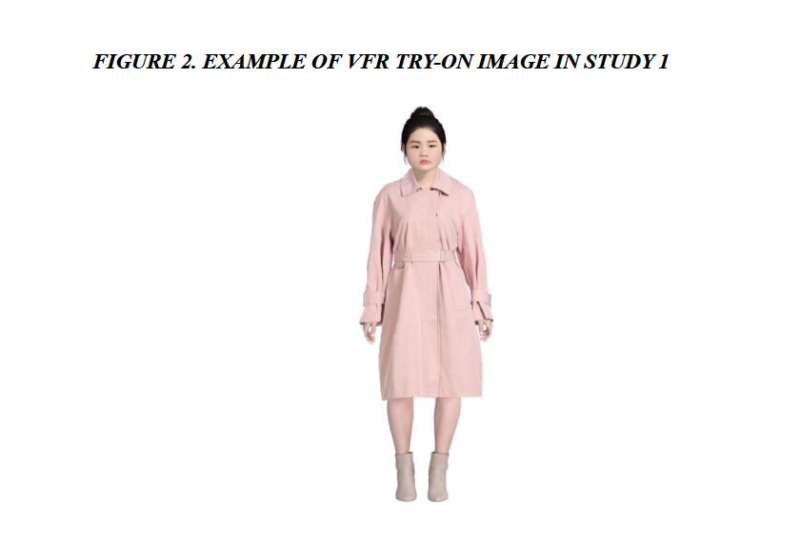For their first study, the researchers compared customer purchase data four weeks before and four weeks after an online women’s apparel store in China launched VFR for some of its products. The software allowed customers to create an avatar (like the one featured here) by uploading their body measurements and full-face photos. Credit: Journal of Marketing Research (2023). DOI: 10.1177/00222437231154871
Driven by online shopping, a growing number of retailers have launched virtual fitting rooms in recent years. That includes Amazon, the top apparel seller in the U.S., along with Nike, Macy's and Walmart. The virtual rooms allow shoppers to 'try on' clothes through interactive simulation technology and texture-mapped product images. It can cut down on returns and nudge hesitant shoppers to click the checkout button.
But findings from a recently published study indicate virtual fitting rooms could backfire on retailers if they assume interactions with the technology are uniformly positive. One of the co-authors, Huifang Mao, is an Iowa State professor and Dean's Fellow of Marketing. She researches consumer behavior through a psychological lens.
"We shouldn't think consumers are all the same and will respond in the same way because they don't. Our research shows virtual fitting rooms can hurt the self-esteem of certain customer segments. We want to make sure technology can help companies make money without hurting customer welfare," says Mao.
The researchers conducted six studies to understand how and why shoppers with a high body mass index (BMI) may experience virtual fitting rooms differently than those with a low BMI. This included analyzing data from more than 8,000 customers for an online women's apparel store in China. The researchers found the virtual technology increased sales among shoppers with a low body mass index. Sales dropped for shoppers with a high BMI.
In a follow-up study, the researchers found the technology negatively impacted product evaluations and lowered self-esteem for participants with a high BMI. Mao says people who are unhappy with how they perceive their appearance may shift that negative feeling to the product. The researchers believe similar patterns happen in physical fitting rooms, as well, but that the effect is stronger with virtual rooms.
"One possible reason for this: There are fewer distractions with virtual rooms. It's just your image with the clothes and a white background. When the only thing you are looking at is your own image, you may view it with a more critical eye," she explains.
In physical fitting rooms, there's more "noise." The mirror reflects walls and additional pieces of clothing. Perhaps music is playing while people converse several feet away.
Possible remedies
Results from several of the researchers' studies suggest marketing strategies that could erase or lessen the negative effects of virtual fitting rooms among consumers with a high BMI:
- Priming shoppers with diversified beauty norms (e.g., including models with different body sizes, shapes and ages on the website.)
- Using a mannequin face for the avatar to create distance between the consumer and their perceived imperfections.
- Providing opportunities for consumers to engage in pro-social behavior (e.g., contributing to a charitable donation with their purchase,) which boosts self-esteem.
- Using virtual fitting rooms with high-end or luxury products, which can signal worth and value.
Mao says integrating these recommendations could help companies provide better service to their customers and improve overall sales. Nearly three-quarters of adults in the U.S. are overweight. They represent the majority of retail shoppers but often have been "overlooked by fashion retailers," the authors write.
The findings are published in the Journal of Marketing Research.
More information: Shuai Yang et al, EXPRESS: Virtual Fitting Room Effect: Moderating Role of Body Mass Index, Journal of Marketing Research (2023). DOI: 10.1177/00222437231154871
Journal information: Journal of Marketing Research
Provided by Iowa State University
























